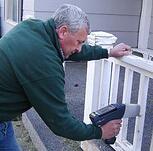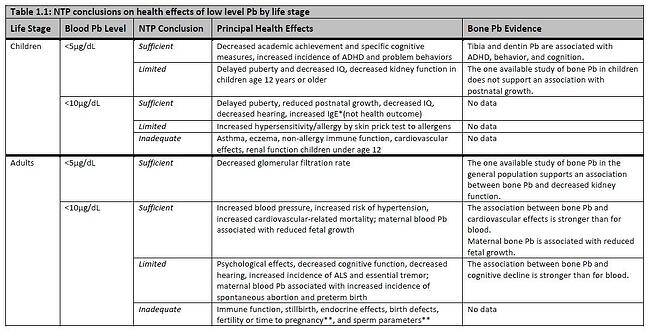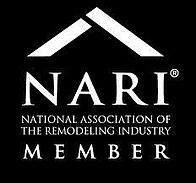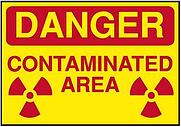Federal Court Denies Elimination of RRP Opt-Out

On June 22 a federal court denied the petition filed by several construction industry trade groups to review the EPA’s amendment to the RRP Rule that eliminated the “opt-out” provision originally included in the rule.
The original petition was filed in November 2011, led by the NAHB. The National Lumber and Building Material Dealers Association, the Window & Door Manufacturers Association, and the Hearth, Patio & Barbecue Association also joined in with NAHB for the petition.
You can read the full decision by the U.S. Court of Appeals for the District of Columbia here.
Looking for hope?
 Renovators and others hoping for the return of the opt-out still have reason for hope for the return of the RRP opt-out because of the Lead Exposure Amendments Act of 2012. Two separate bills were introduced in the Senate and House earlier this year by Sen. James Inhofe, R-Okla., and Reps. John Sullivan, R-Okla., and Tim Murphy, R-Pa. Learn about the most recent Amendment Act introduced on June 7th here.
Renovators and others hoping for the return of the opt-out still have reason for hope for the return of the RRP opt-out because of the Lead Exposure Amendments Act of 2012. Two separate bills were introduced in the Senate and House earlier this year by Sen. James Inhofe, R-Okla., and Reps. John Sullivan, R-Okla., and Tim Murphy, R-Pa. Learn about the most recent Amendment Act introduced on June 7th here.
NARI is working for Remodeler relief as well

NARI Government Affairs Committee Chairman David Merrick, MCR, UDCP, will testify Wednesday, June 27 at 1 p.m. Eastern before the House Small Business Committee on the topic of "Regulatory Flexibility Act Compliance: Is EPA Failing Small Business?" The focus of the hearing will be how the EPA plans to handle LRRP in relation to commercial construction. Merrick will also address NARI concerns about LRRP and residential construction.
 NARI members are encouraged to send letters of support, using the NARI template you can find here. Letters will become part of the hearing record.
NARI members are encouraged to send letters of support, using the NARI template you can find here. Letters will become part of the hearing record.
NARI Members can fax letters to (202) 226-5276 by June 29. Please also fax a copy to NARI National at (847) 298-9225 or e-mail a copy to gac@nari.org.
Merrick's testimony will be streamed live and viewable on-demand on the committee's Website at 1 p.m. Eastern time.
The Committee will also hear testimony from Keith W. Holman, Legal and Policy Counsel, U.S. Chamber of Commerce, Environment, Technology and Regulatory Affairs Division, Washington, DC; Frank Knapp, South Carolina Small Business Chamber of Commerce, Columbia, SC; and Jeff Brediger, Director of Utilities, Orrville Utilities, Orrville, OH;

 Looking for accurate information about the EPA RRP rule?
Looking for accurate information about the EPA RRP rule?  Today, according to an
Today, according to an  Reinstate the opt-out provision to allow homeowners without small children or pregnant women residing in them to decide whether to require LRRP compliance, not the government.
Reinstate the opt-out provision to allow homeowners without small children or pregnant women residing in them to decide whether to require LRRP compliance, not the government.



 My advice to every remodeler is to find a company with an XRF that can do a test and produce a report that can be used as a tool to deal with lead above the regulatory limit. Get fluent in using LSWP. Check each other to make sure no one is poisoning their clients or their pets and lets be professional about it.
My advice to every remodeler is to find a company with an XRF that can do a test and produce a report that can be used as a tool to deal with lead above the regulatory limit. Get fluent in using LSWP. Check each other to make sure no one is poisoning their clients or their pets and lets be professional about it.



 The first thing you should consider is that all bills introduced must first go to committee. The second thing you should realize is that the vast majority of bills introduced … will never get out of committee review and thus, will never get a chance to be voted on. Thirdly, even if the bill gets voted on, it must be approved by the majority of Senators (in this bill’s case). Lastly, even if passed by the Senate; the House & President must approve.
The first thing you should consider is that all bills introduced must first go to committee. The second thing you should realize is that the vast majority of bills introduced … will never get out of committee review and thus, will never get a chance to be voted on. Thirdly, even if the bill gets voted on, it must be approved by the majority of Senators (in this bill’s case). Lastly, even if passed by the Senate; the House & President must approve. The grandparent of RRP is Title X of the Housing and Community Development Act of 1992, also known as the Residential Lead-Based Paint Hazard Reduction Act of 1992 (Title X). The grandparents gave birth to the parent of RRP, Title IV—Lead Exposure Reduction, which amended the Toxic Substances Control Act (TSCA).
The grandparent of RRP is Title X of the Housing and Community Development Act of 1992, also known as the Residential Lead-Based Paint Hazard Reduction Act of 1992 (Title X). The grandparents gave birth to the parent of RRP, Title IV—Lead Exposure Reduction, which amended the Toxic Substances Control Act (TSCA). To put it simply, we need to come to grips that the RRP is most likely going to be required on public and commercial buildings. Public and commercial buildings have adults in them. Would it make sense to Opt-Out adults in target homes, but not Opt-Out adults in public and commercial buildings? Unfortunately, the answer is most likely not.
To put it simply, we need to come to grips that the RRP is most likely going to be required on public and commercial buildings. Public and commercial buildings have adults in them. Would it make sense to Opt-Out adults in target homes, but not Opt-Out adults in public and commercial buildings? Unfortunately, the answer is most likely not.


 A recent survey by the National Association of the Remodeling Industry shows that a full majority of members responding to the survey agreed with the
A recent survey by the National Association of the Remodeling Industry shows that a full majority of members responding to the survey agreed with the  The NARI press release also clarified that NARI continues to work actively with the EPA on ways the agency can educate the public on the importance of hiring EPA-certified remodelers to do work on homes built before 1978. NARI has been and continues to push the agency for tougher enforcement of the rules to crack down on firms lacking the required EPA certification that are violating the rule and failing to protect homeowners.
The NARI press release also clarified that NARI continues to work actively with the EPA on ways the agency can educate the public on the importance of hiring EPA-certified remodelers to do work on homes built before 1978. NARI has been and continues to push the agency for tougher enforcement of the rules to crack down on firms lacking the required EPA certification that are violating the rule and failing to protect homeowners.
 I suggest the real problem is that the original rule was poorly conceived and poorly written. Because we are now stuck with it, the proposed amendments are really just band-aid approaches to try to make it better for or more palatable to those affected by the rule. What we really need is a new well thought out rule to replace the existing rule, with the input and leadership of the industry this time. And, the industry needs to be proactive this time in its writing, its content and its enforcement.
I suggest the real problem is that the original rule was poorly conceived and poorly written. Because we are now stuck with it, the proposed amendments are really just band-aid approaches to try to make it better for or more palatable to those affected by the rule. What we really need is a new well thought out rule to replace the existing rule, with the input and leadership of the industry this time. And, the industry needs to be proactive this time in its writing, its content and its enforcement. Not using lead safe practices on a pre 1978 property is a big risk. Unless the house is pretested before renovations there is no point of reference regarding existing contamination. If lead safe work practices are not used, how will the business prove it did not cause the contamination?
Not using lead safe practices on a pre 1978 property is a big risk. Unless the house is pretested before renovations there is no point of reference regarding existing contamination. If lead safe work practices are not used, how will the business prove it did not cause the contamination?

 Both sides of this issue have valid points to consider. Before we make rash decisions have we looked at the entire picture? We can do better than our politicians, but we must think before we act.
Both sides of this issue have valid points to consider. Before we make rash decisions have we looked at the entire picture? We can do better than our politicians, but we must think before we act. Whether the Opt Out comes back or not, what about the employees of the firms who intend on using this option? Did anyone ask those who are actually doing the work how they feel about their health risks? Will they have a voice without retaliation?
Whether the Opt Out comes back or not, what about the employees of the firms who intend on using this option? Did anyone ask those who are actually doing the work how they feel about their health risks? Will they have a voice without retaliation? I believe this law can create marketing and positioning opportunities to those who see it this way and in the process, keeps everyone safe – and for those who see it differently, it’s obviously a never ending source of complaints which has divided our industry at a time when we need each others’ back more than ever.
I believe this law can create marketing and positioning opportunities to those who see it this way and in the process, keeps everyone safe – and for those who see it differently, it’s obviously a never ending source of complaints which has divided our industry at a time when we need each others’ back more than ever.


